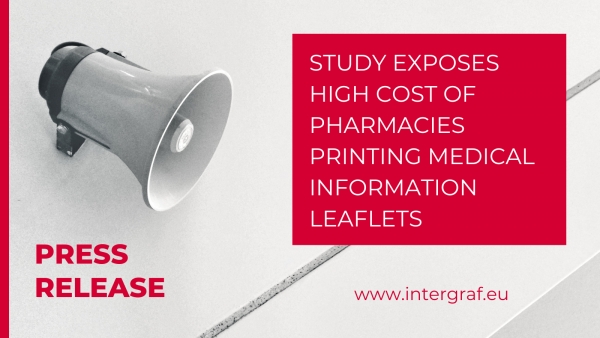28 October 2013

Risk Assessments: Is it a minefield?
Back in the early 90s saw the introduction of six key pieces of legislation commonly know as the 'six pack', which was the implementation of a number of European Directives to improve the general standard of health and safety for workplaces.
One significant regulation was The Management of Health & Safety at Work Regulations, which required, under regulation 3, for employers and self employed persons to undertake a risk assessment of their tasks. This requirement has been with us now for over 20 years, and as the regulation states, that every employer shall make a suitable and sufficient assessment of the risks to the health and safety of his employees to which they are exposed whilst they are at work. This regulation also extends to persons not of his/hers employment. The significance of the word 'shall' in the regulations inflicts an absolute duty to comply.
So what do you need to do to comply? The methodical approach to the risk assessment process is basically a careful and critical examination of activities within the workplace, deciding if hazards and risk presented are managed adequately to prevent harm or illness to employees or 'others'. These are visitors, contractors and the general public who could be affected by your activities.
You cannot eliminate all hazards and risks within the business, but the law requires you to protect as far as is ‘reasonably practicable’, this means that you need to take precautions up to the point where doing more would be judged as grossly disproportionate to the residual risk.
There are a number of ways to undertake a risk assessment and it depends on the complexity of the task and associated hazards and risks. The Health & Safety Executive (HSE) believe the most straightforward assessment for most companies is the ‘Five Step’ approach:-
1. Identify the hazard
2. Decide who might be harmed
3. Evaluate the risks and decide on safety measures
4. Record your findings and implement them
5. Review your assessment and update as necessary
The main point you should remember is the difference between ‘hazard’ and ‘risk’, these are always being mixed up and until you understand the definitions your risk assessments can become blurred. So remember:-
• hazard is anything that may cause harm – example, unguarded inward running nips, fork lift trucks, blade changing
• risk is the chance or likelihood that somebody could be harmed
The hazard will never change only the risk and this will depend on how you control the hazard.
It’s easy to become complacent to some hazards within the workplace because you are working with them day in day out and they become forgotten. To enable you to stay ahead of any incidents:-
• walk around the business and identify any foreseeable hazards and associated risks that could cause harm
• engage regularly with your workforce/committee on their views of hazards within their working area
• check manufacturer’s instructions/ hazard data sheets, these will identify key hazards for you
• Review your accident records or sickness records as these will help you identify less obvious hazards.
• Think about long term health issues such as noise.
You must be clear who can be harmed by the hazards, to enable you to manage the risks safely. Look at the control measures that you have in place to see whether they are working and reducing accidents within the workplace.
When you undertake a risk assessment you should be always be asking yourself, “can I eliminate the hazard altogether, can I substitute it for something less hazardous?” For example, solvent based inks to vegetable based inks. If this is not possible you should then ask yourself can I isolate the hazard or the individual from the hazard, if not, what control measures can you put in place? If you cannot do any of the above, then your very last resort is Personal Protective Equipment (PPE) and a safe system of work. But remember, PPE only protects the individual who is wearing it.
When recording your risk assessments there are a number of tools that can be used, there is no hard and fast rule on the layout so long as they follow the five step approach and that the key hazards, whether physical or chemical, etc., have been identified. Whatever format you use ensure that you record what type of injury someone could sustain. For example, just recording noise does not inform an employee that he could suffer from noise induced hearing loss, tinnitus and deafness.
Ensure that you record all your control measures with a good level of narrative explaining in detail the control measure and standard of practice required. This can be an area where employers forget key procedures that they already have in place. But don't forget, it is a legal requirement to communicate your findings of the risk assessment with the individuals identified within.
Once completed, you will need to review your assessments on a regular basis. It is advisable to review annually, however, you may need to review them sooner if there has been an accident, people or processes change in the area or equipment, reported ill health or near miss incident.
Still a minefield? If you think your assessments fall below the legal standard required, please contact your local Health, Safety and Environmental Adviser for further advice and guidance.
If you require assistance on machinery and activity based risk assessments or other support services, please contact Phil Pateman at BPIF Business on 020 7915 8377.
 Intergraf Economic News (Paper Prices) - March 2024
Intergraf Economic News (Paper Prices) - March 2024
18 March 2024
Access the latest edition of the Economic Newsletter for the European Printing Industry for data on paper consumption, and pricing data for pulp, paper and recovered paper. Data for packaging papers and board is also available with this edition.
 STUDY EXPOSES HIGH COST OF PHARMACIES PRINTING MEDICAL INFORMATION LEAFLETS
STUDY EXPOSES HIGH COST OF PHARMACIES PRINTING MEDICAL INFORMATION LEAFLETS
7 March 2024
Intergraf welcomes the release of a study by our partner MLPS (Medical Leaflet = Patient Safety), a subgroup of the European Carton Manufacturers Association (ECMA) shedding light on the potential economic costs associated with the proposed use of Print on Demand (PoD) leaflets in the pharmaceutical legislation revision.
The BPIF is the printing industries champion. By becoming a member you join a diverse and influential community. We help you solve business problems, connect you to new customers and suppliers and make your voice heard in government.
Call 01676 526030









